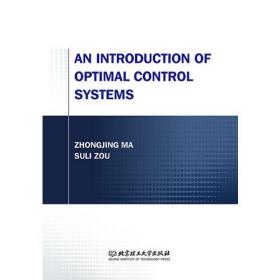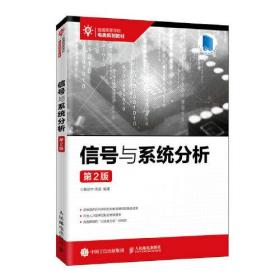
An Introduction of Optimal Control Systems(最优控制系统导论)
¥ 34.3 5.0折 ¥ 68 全新
仅1件
河北保定
认证卖家担保交易快速发货售后保障
作者邹苏郦 著;马中静
出版社北京理工大学出版社
出版时间2020-05
版次1
装帧其他
货号9787568282239
上书时间2024-12-20
- 在售商品 暂无
- 平均发货时间 27小时
- 好评率 暂无
- 最新上架
商品详情
- 品相描述:全新
图书标准信息
- 作者 邹苏郦 著;马中静
- 出版社 北京理工大学出版社
- 出版时间 2020-05
- 版次 1
- ISBN 9787568282239
- 定价 68.00元
- 装帧 其他
- 开本 16开
- 纸张 胶版纸
- 【内容简介】
- 本书主要讨论如何通过变分法来实现*控制问题。更具体地说 研究了如何应用变分法实现泛函极值。它涵盖了具有不同边界条件、涉及多个函数、具有一定约束条件等的泛函极值问题。 1.利用变分法给出了(连续时间)*控制解的充要条件,求解了不同边界条件下的*控制问题,并分别对线性二次型调节器和跟踪问题进行了详细的分析。 2.通过应用基于变分法的Pontryagin*小原理,给出了具有状态约束的*控制问题的解。并将所得结果应用于实现几种常见的*控制问题,如*小时间、*小燃料和*小能量问题等。 作为*控制方法的另一个重要分支,本文还介绍了如何通过动态规划求解*控制问题,并讨论了变分法与动态规划的关系,以供比较。 3.关于涉及单个代理的系统,还值得研究如何在微分模型框架内实现底层*控制问题的分散解。应用庞特里亚金*小原理和动态规划方法实现了平衡。 由于离散时间*控制问题在许多领域都很流行,所以本文也分析了上述所有材料的离散时间版本。
- 【作者简介】
- 马中静,南开大学本科、加拿大麦吉尔大学硕士和博士,美国密歇根大学安娜堡分校博士后。现为自动化学院副教授、博士生导师、电气工程研究所所长、自动化(全英文)专业责任教授。讲授《※优与鲁棒控制》、《自动控制原理》等全英文课程,主持了国家自然科学基金项目“插电式电动汽车※优充电控制策略研究”和“基于交替方向乘子法的大规模多能耦合系统优化问题研究”、科技部国际合作专项“分布式可再生能源控制及优化利用技术的联合研发”以及国家电网等多项课题。在优化、※优控制、博弈论、新能源优化利用等方面取得了丰富的科研成果,在IEEE Trans. on Automatic Control、Automatica、IEEE Trans. on Control Systems Technology等发表高水平SCI/EI论文50余篇,GoogleScholar引用1000 次。为知名SCI期刊《Nonlinear Analysis:Hybrid Systems》编委、副编辑,IEEE高级会员。
- 【目录】
-
Chapter 1 Introduction . . . . . . . . . . . . . . . . . . . . . . . . . . . . . . . . . . . . . . . . . . 1
1.1 Backgrounds and Motivations of the Book . . . . . . . . . . . . . . . . . . . 1
1.2 Optimal Control Theory . . . . . . . . . . . . . . . . . . . . . . . . . . . . . . . . . . . . . 3
1.3 Problem Formulation . . . . . . . . . . . . . . . . . . . . . . . . . . . . . . . . . . . . . . . 12
1.3.1 Some Examples of Optimal Control Problems . . . . . . . 12
1.3.2 Mathematical Formulation . . . . . . . . . . . . . . . . . . . . . . . . . . 19
1.4 Organization . . . . . . . . . . . . . . . . . . . . . . . . . . . . . . . . . . . . . . . . . . . . . . . 24
References . . . . . . . . . . . . . . . . . . . . . . . . . . . . . . . . . . . . . . . . . . . . . . . . . . . . . . . 25
Chapter 2 Extrema of Functional via Variational Method . . 31
2.1 Fundamental Notions . . . . . . . . . . . . . . . . . . . . . . . . . . . . . . . . . . . . . . . 32
2.1.1 Linearity of Function and Functional . . . . . . . . . . . . . . . . 32
2.1.2 Norm in Euclidean Space and Functional . . . . . . . . . . . . 34
2.1.3 Increment of Function and Functional . . . . . . . . . . . . . . . 35
2.1.4 Di erential of Function and Variation of
Functional . . . . . . . . . . . . . . . . . . . . . . . . . . . . . . . . . . . . . . . . . . 37
2.2 Extrema of Functional . . . . . . . . . . . . . . . . . . . . . . . . . . . . . . . . . . . . . . 39
2.2.1 Extrema with Fixed Final Time and Fixed
Final State . . . . . . . . . . . . . . . . . . . . . . . . . . . . . . . . . . . . . . . . . . 43
2.2.2 Speci c Forms of Euler Equation in
Di erent Cases . . . . . . . . . . . . . . . . . . . . . . . . . . . . . . . . . . . . . . 47
2.2.3 Su cient Condition for Extrema . . . . . . . . . . . . . . . . . . . . 55
2.2.4 Extrema with Fixed Final Time and
Free Final State . . . . . . . . . . . . . . . . . . . . . . . . . . . . . . . . . . . . . 58
2.2.5 Extrema with Free Final Time and
Fixed Final State . . . . . . . . . . . . . . . . . . . . . . . . . . . . . . . . . . . 61
2.2.6 Extrema with Free Final Time and
Free Final State . . . . . . . . . . . . . . . . . . . . . . . . . . . . . . . . . . . . . 66
2.3 Extrema of Functional with Multiple Independent
Functions . . . . . . . . . . . . . . . . . . . . . . . . . . . . . . . . . . . . . . . . . . . . . . . . . . 72
2.4 Extrema of Function with Constraints . . . . . . . . . . . . . . . . . . . . . . 80
2.4.1 Elimination/Direct Method . . . . . . . . . . . . . . . . . . . . . . . . . 81
2.4.2 Lagrange Multiplier Method . . . . . . . . . . . . . . . . . . . . . . . . . 82
2.5 Extrema of Functional with Constraints . . . . . . . . . . . . . . . . . . . . 84
2.5.1 Extrema of Functional with Di erential
Constraints . . . . . . . . . . . . . . . . . . . . . . . . . . . . . . . . . . . . . . . . . 84
2.5.2 Extrema of Functional with Isoperimetric
Constraints . . . . . . . . . . . . . . . . . . . . . . . . . . . . . . . . . . . . . . . . . 89
2.6 Summary . . . . . . . . . . . . . . . . . . . . . . . . . . . . . . . . . . . . . . . . . . . . . . . . . . 91
2.7 Exercises . . . . . . . . . . . . . . . . . . . . . . . . . . . . . . . . . . . . . . . . . . . . . . . . . . . 92
Chapter 3 Optimal Control via Variational Method . . . . . . . . . 96
3.1 Necessary and Su cient Condition for Optimal Control . . . . . 96
3.2 Optimal Control Problems with Di erent
Boundary Conditions . . . . . . . . . . . . . . . . . . . . . . . . . . . . . . . . . . . . . 104
3.2.1 Optimal Control with Fixed Final Time and
State . . . . . . . . . . . . . . . . . . . . . . . . . . . . . . . . . . . . . . . . . . . . . . . 104
3.2.2 Optimal Control with Fixed Final Time and
Free Final State . . . . . . . . . . . . . . . . . . . . . . . . . . . . . . . . . . . . 106
3.2.3 Optimal Control with Free Final Time and
Fixed Final State . . . . . . . . . . . . . . . . . . . . . . . . . . . . . . . . . . 111
3.2.4 Optimal Control with Free Final Time and State . . . 112
3.3 Linear Quadratic Regulator Problems . . . . . . . . . . . . . . . . . . . . . 122
3.3.1 In nite-interval Time-invariant LQR Problems . . . . . 130
3.4 Linear Quadratic Tracking Problems . . . . . . . . . . . . . . . . . . . . . . 132
3.5 Summary . . . . . . . . . . . . . . . . . . . . . . . . . . . . . . . . . . . . . . . . . . . . . . . . . 140
3.6 Exercises . . . . . . . . . . . . . . . . . . . . . . . . . . . . . . . . . . . . . . . . . . . . . . . . . . 140
Chapter 4 Pontryagin's Minimum Principle . . . . . . . . . . . . . . . . . 145
4.1 Pontryagin's Minimum Principle with Constrained
Control . . . . . . . . . . . . . . . . . . . . . . . . . . . . . . . . . . . . . . . . . . . . . . . . . . . 145
4.2 Pontryagin's Minimum Principle with Constrained
State Variable . . . . . . . . . . . . . . . . . . . . . . . . . . . . . . . . . . . . . . . . . . . . . 155
4.3 Minimum Time Problems . . . . . . . . . . . . . . . . . . . . . . . . . . . . . . . . . 159
4.3.1 Optimal Control Solution for Minimum
Time Problems . . . . . . . . . . . . . . . . . . . . . . . . . . . . . . . . . . . . 159
4.3.2 Minimum Time Problems for Linear
Time-invariant Systems . . . . . . . . . . . . . . . . . . . . . . . . . . . . 161
4.4 Minimum Fuel Problems . . . . . . . . . . . . . . . . . . . . . . . . . . . . . . . . . . 171
4.5 Performance Cost Composed of Elapsed Time and
Consumed Fuel . . . . . . . . . . . . . . . . . . . . . . . . . . . . . . . . . . . . . . . . . . . . 192
4.6 Minimum Energy Problems . . . . . . . . . . . . . . . . . . . . . . . . . . . . . . . 204
4.7 Performance Cost Composed of Elapsed Time and
Consumed Energy . . . . . . . . . . . . . . . . . . . . . . . . . . . . . . . . . . . . . . . . . 212
4.8 Summary . . . . . . . . . . . . . . . . . . . . . . . . . . . . . . . . . . . . . . . . . . . . . . . . . 221
4.9 Exercises . . . . . . . . . . . . . . . . . . . . . . . . . . . . . . . . . . . . . . . . . . . . . . . . . . 221
Chapter 5 Conclusions . . . . . . . . . . . . . . . . . . . . . . . . . . . . . . . . . . . . . . . . . 226
点击展开
点击收起
— 没有更多了 —












以下为对购买帮助不大的评价